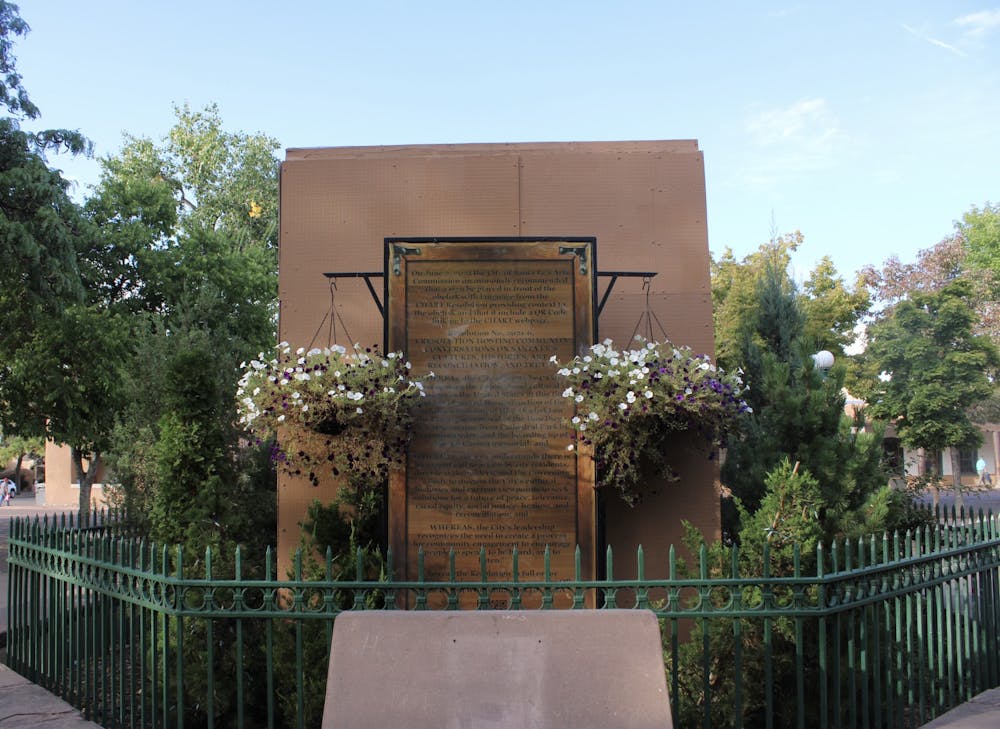The two-day trial to determine whether a controversial toppled obelisk will be returned to the center of the Santa Fe Plaza concluded on Sept. 13. A final decision has not yet been made.
The obelisk displayed a plaque at the bottom that contained derogatory language toward Indigenous people. This caused outrage over the years and ultimately led to the toppling of the monument by protesters on Indigenous Peoples’ Day in 2020.
The plague originally read, “To the heroes who have fallen in various battles with savage Indians in the Territory of New Mexico,” though “savage” had been scratched off over the years, according to National Geographic.
Four years after the toppling, court proceedings began in Santa Fe to determine the obelisk’s fate. A written ruling will be issued “in due time” after Sept. 27, according to Source New Mexico.
The lawsuit follows movements by Indigenous activists to remove offensive imagery around the state. Some of New Mexico’s historical figures have come under scrutiny for their treatment of Indigenous people during the Spanish colonization of the Southwest.
In June 2020, similar protests occurred in Rio Arriba County, which resulted in the removal of a controversial statue of conquistador Don Juan de Oñate, according to KRQE. In 2023, a man shot an Indigenous activist at a celebration of the indefinite postponement of the reinstallation of the statute, according to Source New Mexico.
The obelisk in Santa Fe — also known as the Soldiers’ Monument — was erected in 1868, and was meant to honor United States soldiers who fought in the American Civil War, according to National Geographic.
In response to the concerns of the community in the months prior to the toppling of the obelisk, Santa Fe Mayor Alan Webber issued an emergency proclamation demanding that three monuments be taken down: the Soldiers’ Monument, a statue of Don Diego de Vargas and a memorial obelisk for frontiersman Kit Carson.
Union Protectíva de Santa Fé filed the lawsuit against Webber and the City of Santa Fe in 2021. The union suggested that Webber’s proclamation had committed a breach of the state’s Prehistoric and Historic Sites Preservation Act, according to the Santa Fe New Mexican.
Union Protectíva de Santa Fé is one of the oldest Spanish fraternal organizations in the United States, according to its website.
“We hope that this case will reaffirm New Mexico’s historic preservation laws, which protect our unique treasures and which should never be disregarded for the sake of political expedience,” Union Protectíva’s lawyer Kenneth Stalter told KRQE.
After hearing arguments from witnesses for the City of Santa Fe and Union Protectítiva, Judge Matthew Wilson ordered both sides to submit their arguments and evidence of factual findings by Sept. 27, according to Source New Mexico, after which a ruling will be made.
Get content from The Daily Lobo delivered to your inbox
Maria Fernandez is a freelance reporter and photographer for the Daily Lobo. She can be reached at news@dailylobo.com or on X @dailylobo






